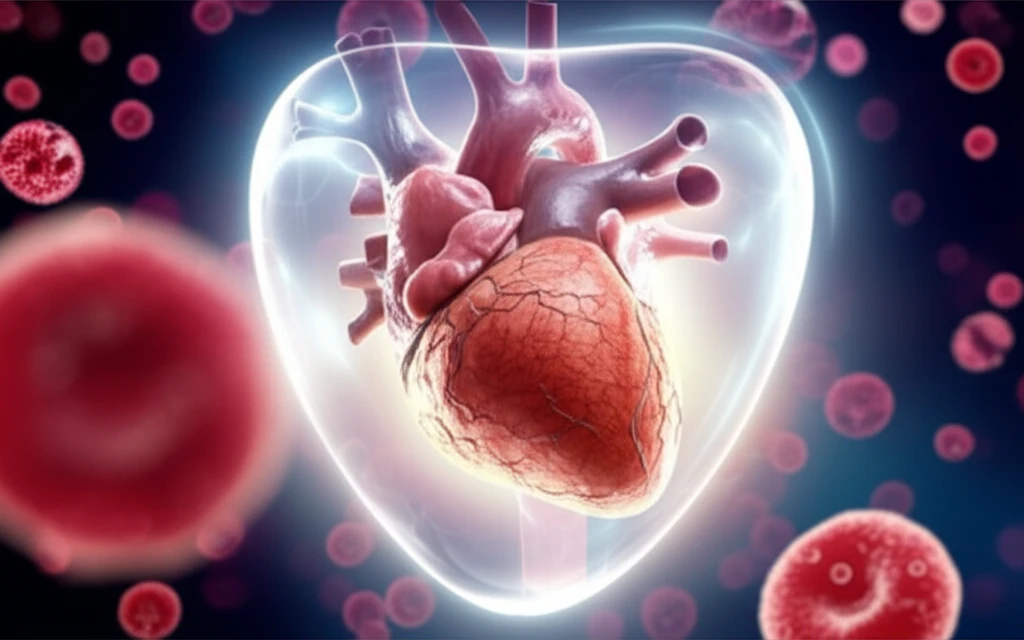
Protecting Your Heart: How a Novel Compound Fights Hypoxia-Induced Damage
"Discover SurR9C84A, a promising solution for safeguarding heart cells from the damaging effects of oxygen deprivation."
Cardiovascular diseases remain a leading cause of mortality worldwide, with hypoxic conditions—where the heart muscle doesn't receive enough oxygen—playing a significant role in heart damage. Hypoxia can lead to apoptosis, or programmed cell death, in cardiomyocytes, the heart's essential contractile cells. Preserving these cells is crucial for maintaining heart function.
Recent research has focused on identifying compounds that can protect cardiomyocytes from the damaging effects of hypoxia. One such promising compound is SurR9C84A, which has shown potential in safeguarding heart cells from hypoxia-induced apoptosis.
This article delves into a study that investigates the protective effects of SurR9C84A on human cardiomyocytes subjected to hypoxic conditions, examining its ability to recover and protect these vital cells.
SurR9C84A: A Shield Against Hypoxia

The study, as detailed in Experimental Cell Research, explored the effects of SurR9C84A on human cardiomyocytes under hypoxic conditions. The researchers found that SurR9C84A significantly enhanced cell viability, indicating a protective effect against hypoxia-induced cell death. Different concentrations of SurR9C84A were tested to determine the optimal dosage for maximum protection.
- Enhanced Cell Viability: Cardiomyocytes treated with SurR9C84A showed a significant increase in cell viability compared to untreated cells under hypoxic conditions.
- Optimal Concentration: A concentration of 1 µg/mL of SurR9C84A was found to provide the most significant protection against hypoxia-induced cell death.
- Morphological Preservation: Microscopic analysis revealed that SurR9C84A helped maintain the structural integrity of cardiomyocytes, preventing the cellular damage typically associated with hypoxia.
- Reduced Cytotoxicity: Lactate dehydrogenase (LDH) assays indicated that SurR9C84A treatment reduced cytotoxicity in hypoxic cardiomyocytes.
Implications and Future Directions
The discovery of SurR9C84A's protective effects on cardiomyocytes opens new avenues for therapeutic interventions aimed at preventing and treating heart damage associated with hypoxic conditions. This is particularly relevant for individuals at risk of myocardial infarction, stroke, or other conditions that compromise oxygen supply to the heart.
Further research is needed to fully elucidate the mechanisms by which SurR9C84A exerts its cardioprotective effects. Understanding these mechanisms could pave the way for the development of targeted therapies that harness the potential of SurR9C84A to safeguard heart cells.
While the initial findings are promising, clinical trials are essential to validate the efficacy and safety of SurR9C84A in human patients. If successful, SurR9C84A could represent a significant advancement in the prevention and treatment of cardiovascular diseases.
